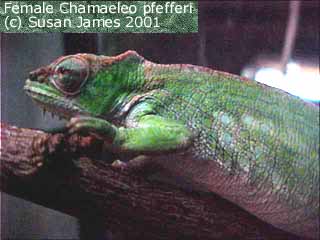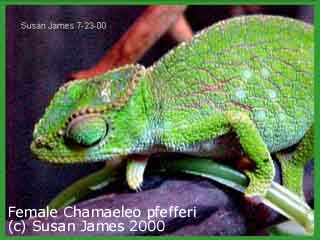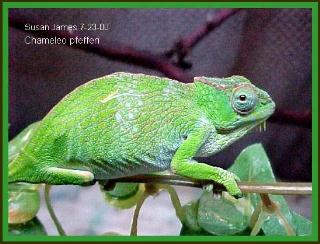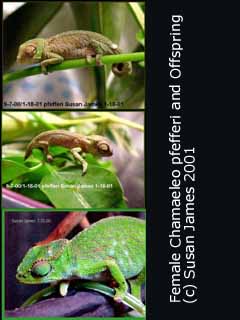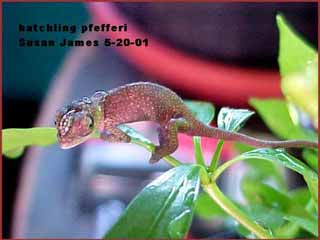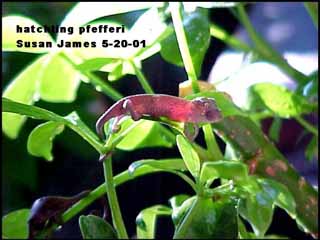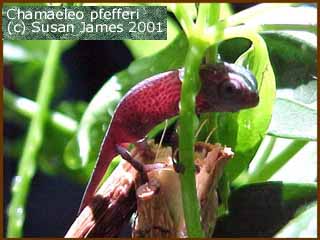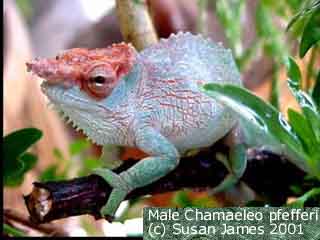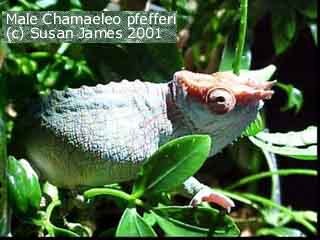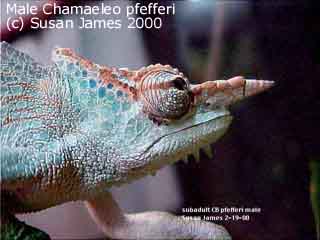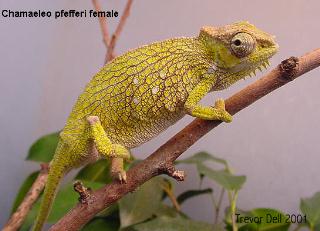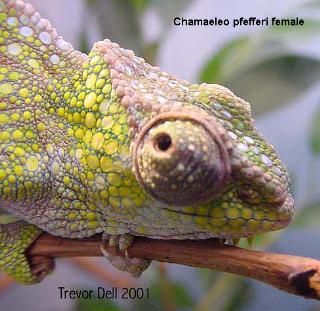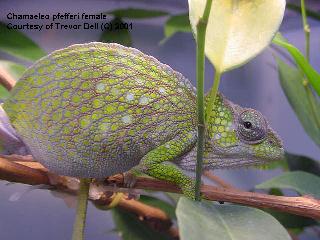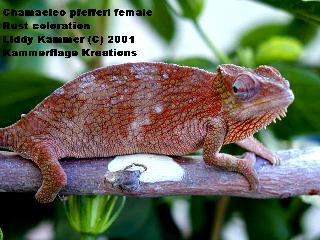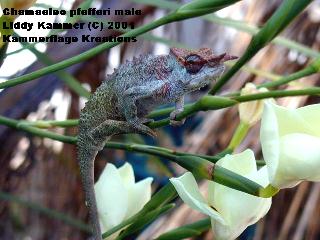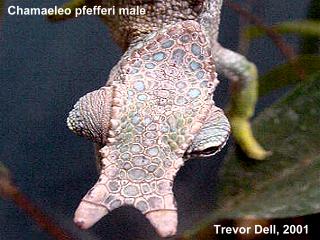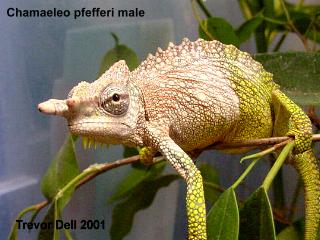Native to the mid-elevation montane regions of Cameroon, C. pfefferi is a small, docile chameleon with males reaching total lengths of only 6-8 inches (SVL Length: 2.5-3.5 inches; 10-18 grams) with females slightly smaller.
There is a well developed casque. Twenty-five plate-like scales adorn the body on each side. There is a prominent gular crest with spiky conical scales spaced far apart on both sexes, numbering 10 to 13. The rostral process is well developed, rising diagonally upwards over the nostrils (bridging two short diverging horns) and are concave and somewhat flattened vertically. 0scalation is heterogeneous in both sexes. The top of head is orange or orange with light blue to violet scales. The temporal, lateral, orbital, and canthal crests and rostral are orange. Body coloration can include red, blue, green, yellow, brown and orange and varies between individuals. A brownish-orange to faded black horizontal eye stripe is present in both sexes. Tails measure slightly longer than bodies (SVL). Females are slightly smaller than males. The dorsal crest is less developed in females. Rostral are well developed on males, but appear on females as a small ridge, fused at the base and separated apart in front. Females lack the vivid coloration displayed by the male. (Primary source: Schuetze, T)
C. pfefferi prefer moderate temperatures of around 8OºF days with a 20 degree drop at night. Humidity is ideal at 80%. Water is eagerly accepted by dripping. They seem to dislike being sprayed or "rained on". Prey items are eagerly accepted with a particular fondness for flies and worms. Hatchlings willingly eat fruit flies, pinhead crickets, or tiny
wax worms.
Little is known about reproduction. Breeding can occur at 6 months. Five - 11 eggs are laid per clutch. Number of clutches per year is unknown. Gestation is 2 - 3 months. Six clutches of eggs incubated at 68ºF - 72ºF hatched at approximately 17 weeks, with one clutch hatching at 18 weeks and one at 19 weeks. Sexual maturity occurs at 6 months.
References
Klaver, C. & W. Boehme. 1997. Chamaeleonidae.
Das Tierreich, 112: i-xiv' 1 - 85. Verlag Walter de Gruyter & Co., Berlin, New York.
Martin, J., 1992. Masters of Disguise: A Natural History of Chameleons.
Facts On File, Inc., New York, NY.
Necas, P. 1999. Chameleons: Nature's Hidden Jewels. Krieger Publishing Company, Malabar, FL.

